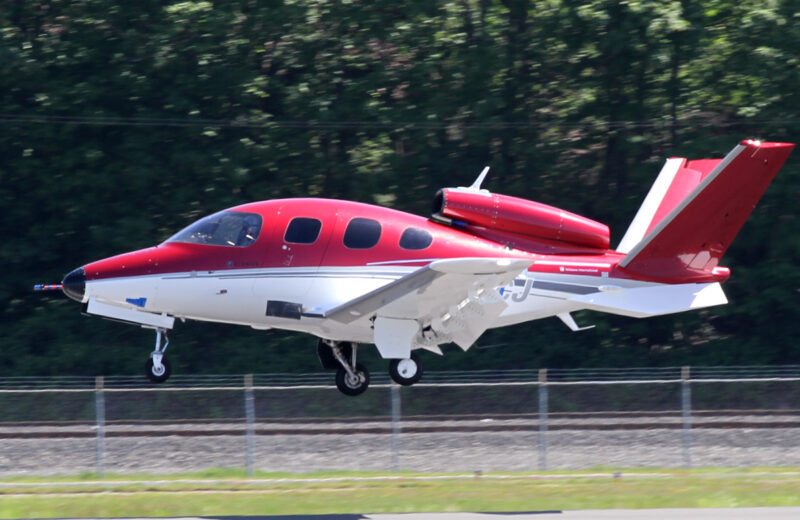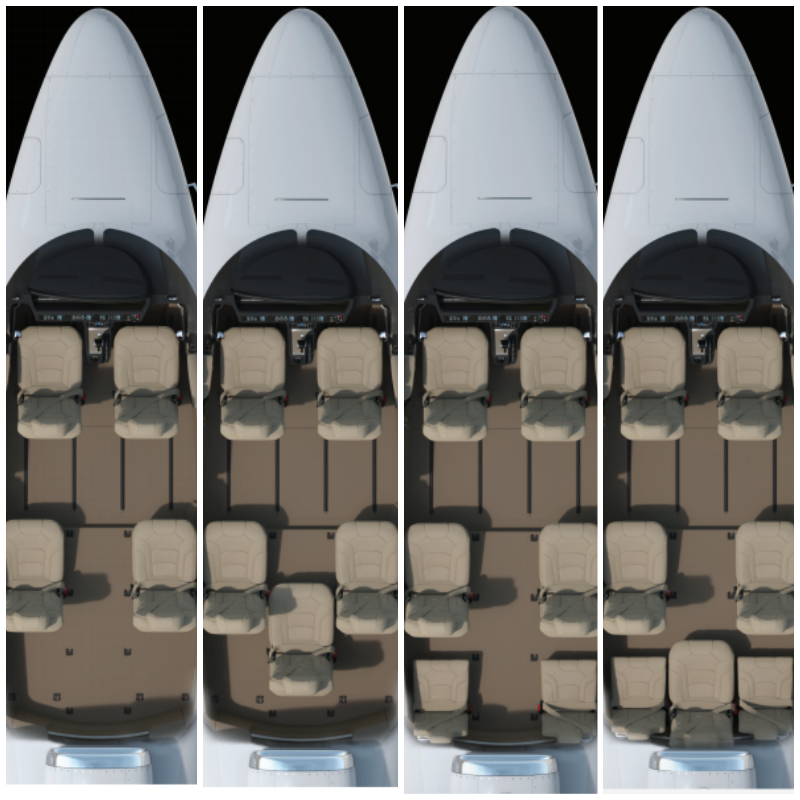Cirrus Vision Jet: Buyer’s and Investor’s Guide

A buyer’s guide to the Cirrus Vision Jet.
Pros
The Vision Jet does what is expected from a very light jet, at a lower price point than the rest of the market.
Cons
It is less capable than other similar aircraft – flying lower, slower and with a less spacious cabin than other very light jets.
_______________________________________________________________________________________________________
Cirrus – a US based OEM who predominantly manufactures general aviation aircraft have ventured into turbine-powered aircraft. The Vision SF50 is branded a ‘Personal Jet’, and is aimed more towards pilot-owners than other very light jets such as the Citation Mustang or Eclipse 500. Its low list price and operating costs make the Vision Jet a great transition into turbine aircraft for business use – especially for pilot-owners.
Flying
The Vision Jet has a maximum range of 1,200nm/1,300mi/2,222km allowing it to fly from New York to Dallas, London to St. Petersburg or Hong Kong to Bangkok. This allows the ‘personal jet’ to fly as far as other very light jets such as the Phenom 100E and Citation Mustang.
The Williams F535-5A engine produces 1,800lbs of thrust and allows the Vision Jet to cruise at 345mph/482kph. The benefit of this having a single engine is that it is cheaper to operate than two – however it also reduces the speed of the aircraft. The Vision Jet is the slowest aircraft in the very light jet segment, meaning that it takes more time to get to your destination. This is a major disadvantage, especially if passengers are travelling for business purposes.
Its maximum operating altitude of 28,000ft limits the Vision Jet. Competitor aircraft with higher operating altitudes are able to fly in thinner air, making them more efficient, as well as avoid major weather systems – something the Vision Jet could encounter.
But being one of the smallest jets in its class has advantages. The Vision Jet requires just 2,036ft/620m to take off, and 1,628ft/496m to land – allowing the aircraft to take advantage of smaller airstrips closer to the passenger’s final destination.
The cockpit features a side yoke, Cirrus Perspective Touch (a Garmin system) with two high-resolution screens and three touchscreen displays. The aircraft is also certified for Flight Into Known Ice – allowing the aircraft to go through weather that may cause icing, rather than having to divert around.
Travelling
You do not buy a very light jet to have a large cabin. The Vision Jet has a cabin height of 4.1ft (1.2m) and a width of 5.1ft (1.5m), with capacity to seat up to seven people (with the optional third row seating). The seat count includes both pilot seats – another hint that the Vision Jet is aimed towards pilot-owners. The seats in the cabin are equipped with a quick release system, allowing for quickly modifiable seating layout.

The available seating configurations are easy to change between due to the seat modules (Images: Cirrus)
The cabin includes four USB ports, air conditioning, pressurisation to 8,000ft and leather seats. An entertainment display, Wi-Fi and multi-zone climates are all further options that can be fitted to the Vision Jet. The size of the cabin means there is no lavatory. Although common for smaller aircraft to not have a lavatory, some very light jets do – such as the HondaJet HA-420.
The Vision Jet also features the Cirrus Airframe Parachute System (CAPS) – a parachute that can be deployed during an emergency such as an engine failure. The parachute will control the aircraft’s rate of decent and aims to reduce the forces at impact. Whilst this isn’t a feature you ever want to use – it provides great piece of mind every time you use the aircraft.
Despite these features, the cabin is still small and lacks the same finish as competitors such as the Phenom 100E.
Owning
The cost of owning and operating is where the Vision Jet stands out in the market.
The list price for a new aircraft is $1.96 million, making it $750,000 cheaper than the Citation M2, and over $2 million cheaper than a new Phenom 100E or HondaJet HA-420.
It is not just the purchase price that is attractive – the operating costs are also significantly lower than the competition. Data from Conklin & de Decker shows a variable operating cost of $676 per hour – almost half of the cost of operating competitor aircraft from Embraer, Cessna and HondaJet.
This is due to the Vision Jet only having one engine – compared to the two normally found on very light jets – and its light weight. The Vision Jet is also rated for single pilot operations; meaning only one pilot is needed to fly the aircraft. This is common for smaller jets and reduces the operating cost by not needing to hire a first-officer. It would not be surprising for owners of a Vision Jet to pilot the aircraft themselves, further reducing the fixed operating cost by not needing to hire a pilot at all.
According to GAMA, 22 Vision SF50’s were delivered in 2017 – taking the global fleet to 36 as of January 2018.
At the time of writing, there are no Vision Jet’s available on the pre-owned market – a sign that the plane is popular with current owners. The aircraft fills a specific niche in the industry, and with strong support from Cirrus general aviation customers transitioning into larger aircraft, it looks promising for residual values.
_________________________________________________________________________
Hard Facts
Maximum range: 1,300miles/2,222km/1,200nm
Maximum speed: 345mph/555kmh/0.4Mach
Typical passengers: 2
Typical crew: 1
List price for new aircraft: $1.96m
Pre-owned price: N/A








